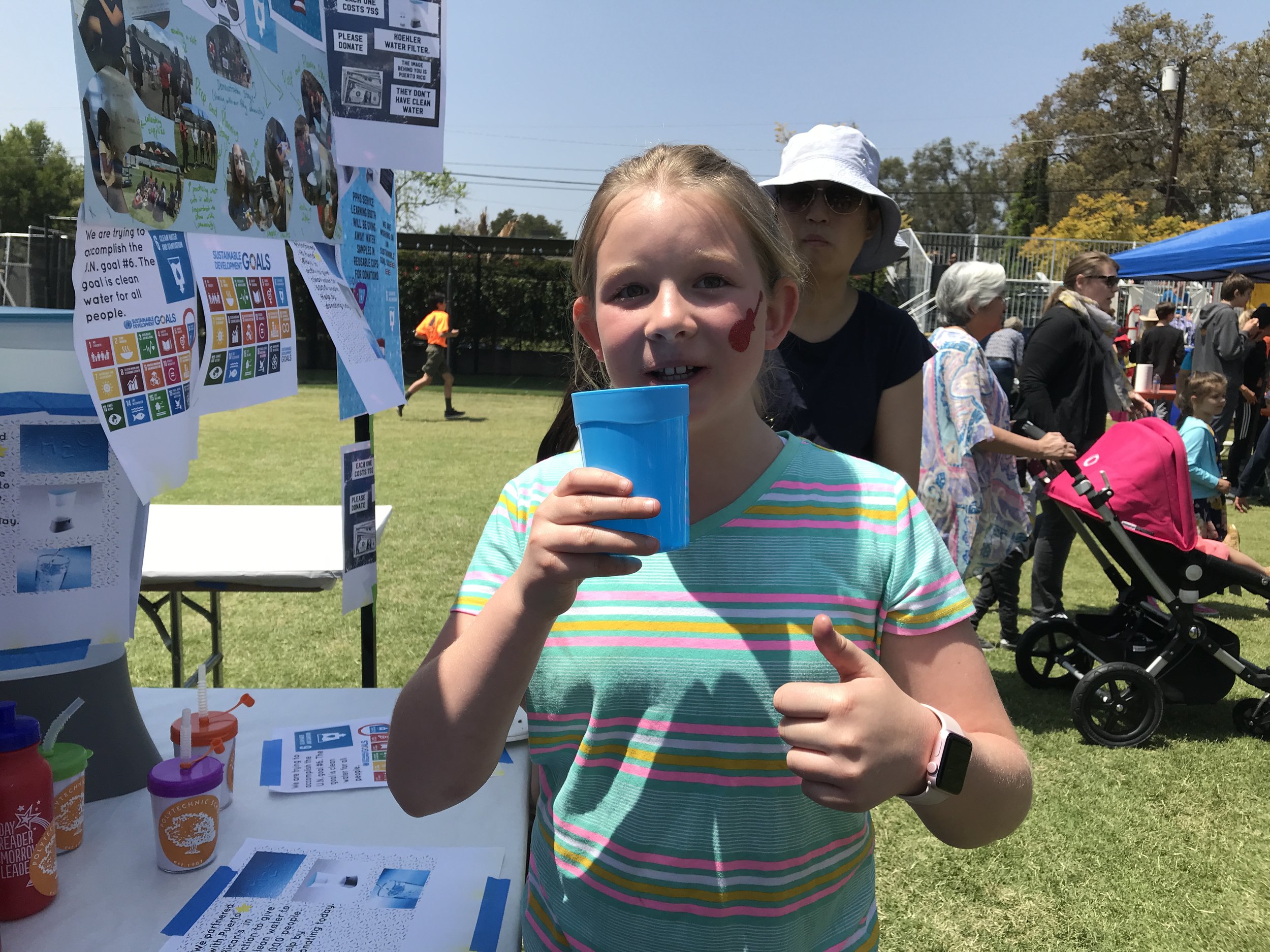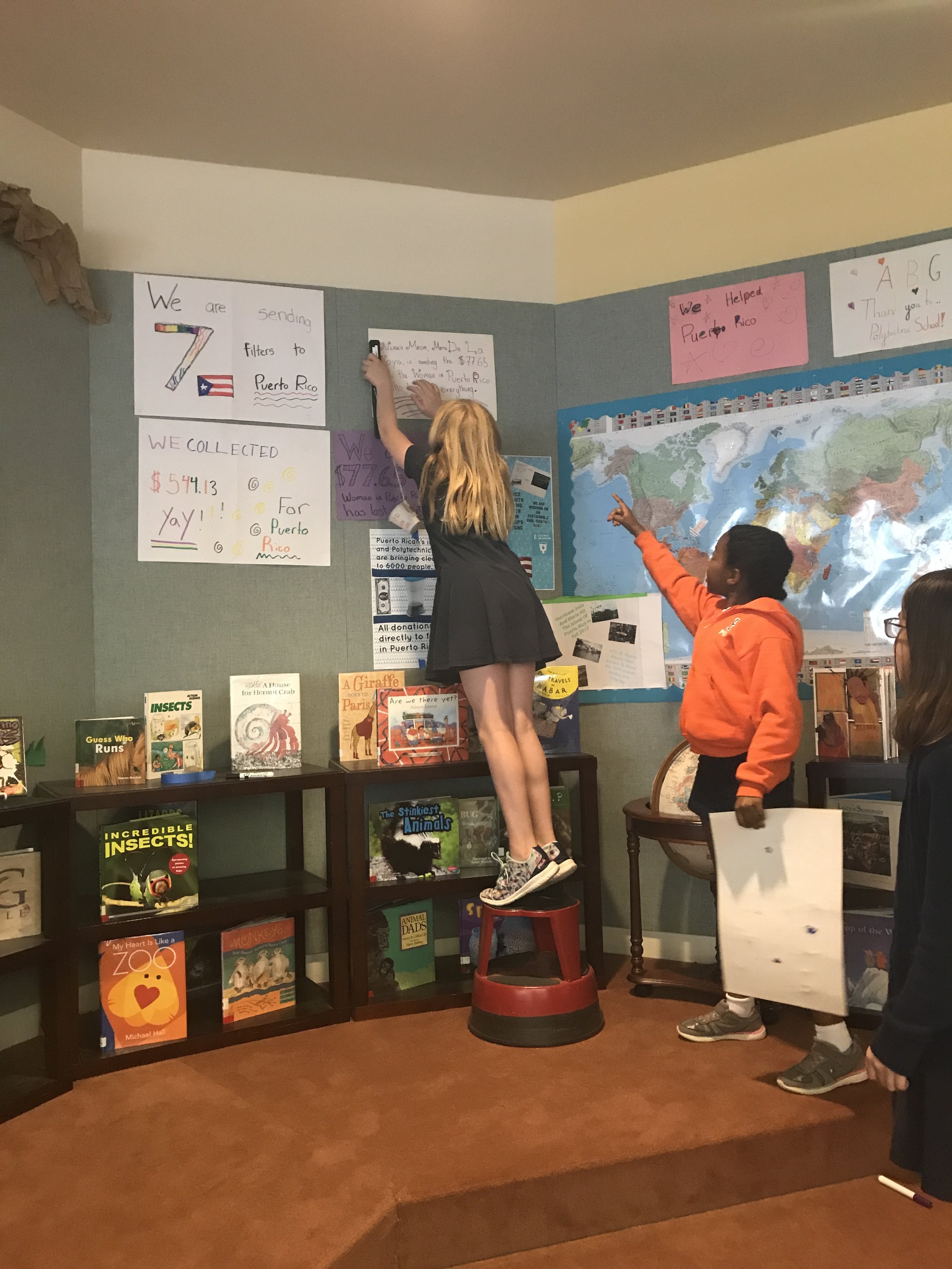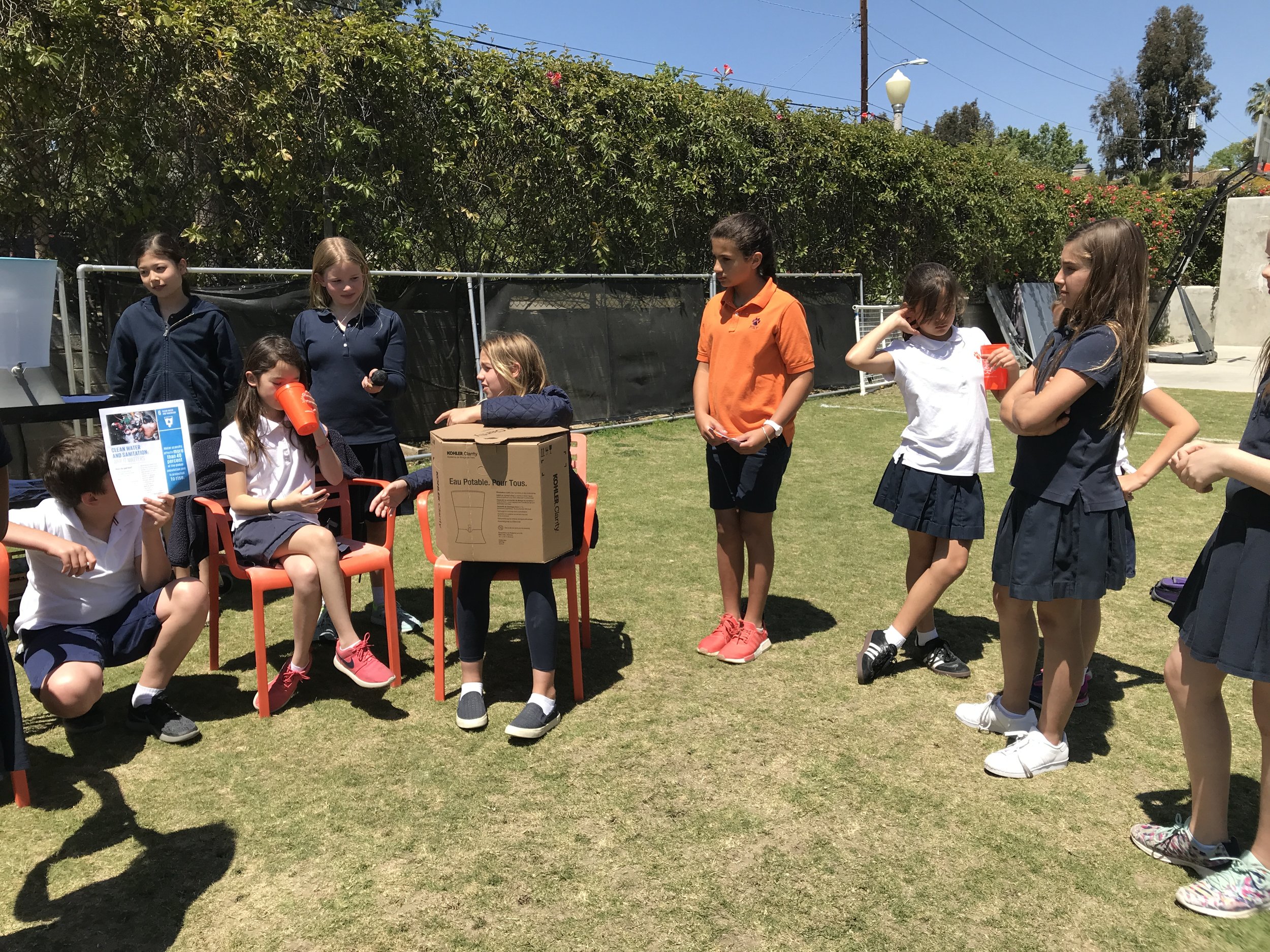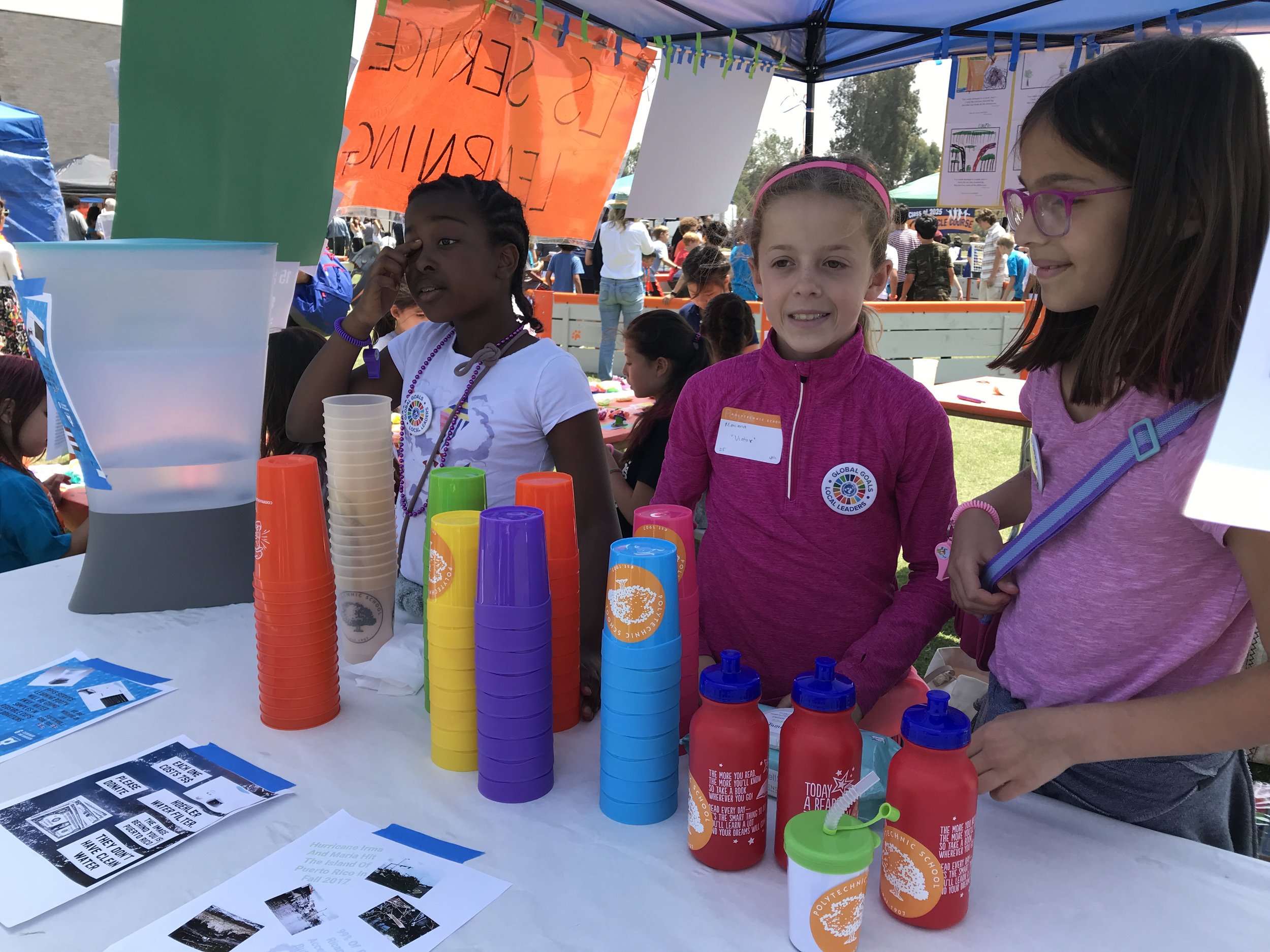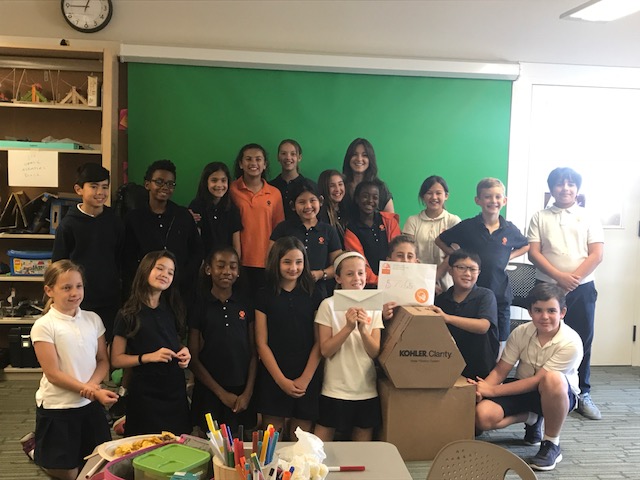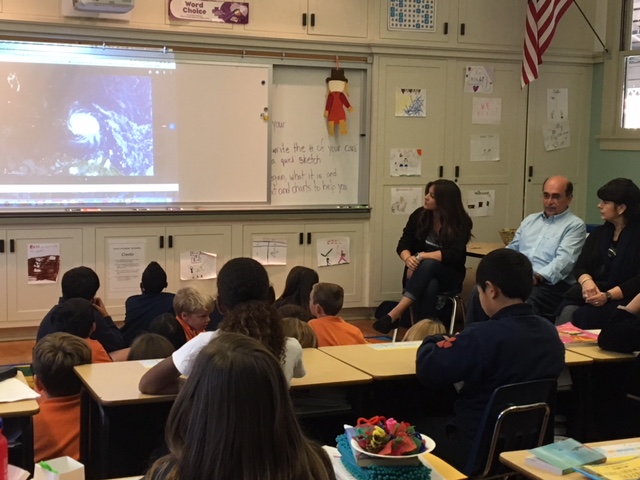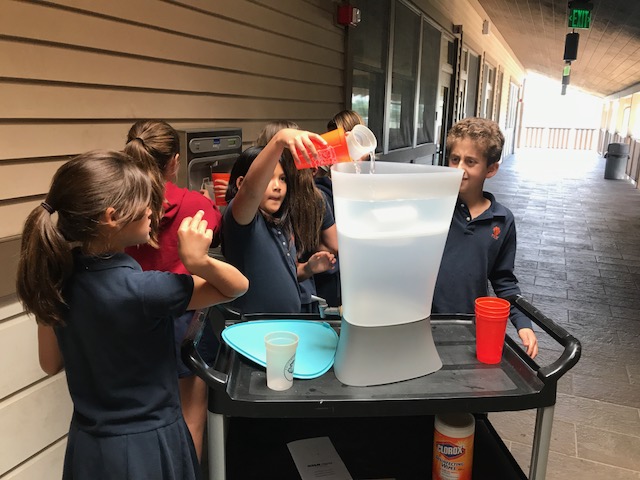Service Learning with Poly Students
It all started when…
By Heather Jolly, Polytechnic Lower School Service Learning Coordinator
Service Learning has become more and more a common term used among students, faculty, and administration at Poly. But what is service learning really all about?
One of the best ways to begin explaining service learning is to state what it is not. Service learning is not community service. Service learning is not an extracurricular activity. SL is not teacher-directed. SL is not fundraising. SL is not a one-time act of service. “Community service, as many of us know, has been a part of educational systems for years. But what takes service learning to the next level is that it combines serving the community with the rich academic frontloading, assessment and reflection typically seen in project-based learning” (http://www.edutopia.org By Heather Wolpert-Gawron 2016).
Service-Learning can be defined as a research-based teaching method where guided classroom learning is applied through action that addresses an authentic community need in a process that allows for youth initiative and provides structured time for reflection on the service experience and demonstration of acquired skills and knowledge. In other words, young people investigate issues and then design, implement, reflect on, and tell or teach others about how they have met real-world needs. Through these diverse and meaningful experiences, young people apply knowledge, skills, and behaviors they need to learn while designing and performing service projects. This confluence of learning and service is the defining characteristic of service learning and what distinguishes it from other types of giving. The secret about service learning is the reciprocity: it is designed to help the server as well as the served. (The Complete Guide to Service Learning by Cathryn Berger Kaye, M.A.).
One of the most organic and completely student-driven service learning examples this year was in 4th grade. One of the fourth graders who was originally inspired to help Puerto Rico, wrote the following blog post to share this story with the Kohler Water Company, one of the global organizations the students partnered with throughout the year: “Our service learning idea started in a science class with Ms. Alikhan about natural disasters. We learned about how Puerto Rico was hit by disastrous hurricanes called “Maria” and “Irma.” A group of four fourth grade girls from Polytechnic School decided to start a project to aid victims of the hurricanes. The girls went to the lower school director and one of the deans and asked about providing supplies for the victims. They were supportive and told us to work with the fifth-grade student council on the idea. The four girls spent time during recess and lunch brainstorming the project with fifth graders to plan and spread the news. At a morning meeting with the lower school, the fourth-grade girls presented their idea for aiding the hurricane victims. This idea included partnering with a local organization called Puerto Ricans in Action that would send the donated supplies to Puerto Rico. Later, the whole fourth-grade class learned more about Puerto Rico and the hurricanes. All were invited to participate in this project. The idea was used as a service learning project for the entire fourth grade.
Many eager fourth graders joined and participated voluntarily in meetings during recess or lunch. The first few meetings were about spreading the word. The fourth graders decided on a news report skit that was used as a learning activity to discuss the recent hurricanes. We performed at a lower school community meeting, and the news was out! During the meetings, we also watched videos to learn more about Puerto Rico and their current needs since the initial impact of the hurricanes. We found that it was going to be difficult to ship goods to Puerto Rico so; instead, we brainstormed about how we would raise money to deliver to the victims. The fourth grade also wanted to deliver water filters to help with the locations that were still without water, after learning this was the greatest need on the island. We spent time at meetings researching places that could make water filters, and we partnered with the Kohler Water Company. One water filter costs seventy-five dollars.
We set-up a service learning booth at our annual school fair called the Poly Pet and Hobby Show that would encourage people to donate money. We thought how best to persuade people to donate money. We wanted to educate them on how their money was going to help Puerto Ricans. We thought deeply about it and decided to have people visiting the booth make clay crafts about Puerto Rico’s national flower, animal, and other national symbols. While they were making the clay crafts, they would learn about Puerto Rico and the effects of the hurricanes. If they wanted to donate money, they could. We would explain that their donated money would be used to buy water filters. If they decided to donate money, the people could taste some of the filtered water that would be given to the Puerto Ricans in a free cup to keep as a souvenir. We had our plan but had to wait for the big day to come.
At the Poly Pet and Hobby show, every fourth grader signed up to help for a fifteen-minute shift. Many people came, donated, and created crafts to keep. We raised $544.13. With the money, we bought and donated seven water filters to Puerto Rico. Then, a few lunch meetings later, our Spanish Teacher Sra. Covarrubias helped translate a Spanish news clip about a woman who lost everything during the hurricanes. We had about $19 left that we wanted to donate to the woman along with the filter we used at the Poly Pet and Hobby Show that was donated from the Kohler company. We thought $19 wasn’t enough. The fourth graders then searched their backpacks and home for extra money which turned $19 into $76!.
After the donations were collected and given, the fourth graders, who participated each wrote a letter to thank those who helped our efforts or donated money.
Another fourth grader wrote a personal reflection about this service learning experience: “The island of Puerto Rico had a rough 2017 with hurricane Irma and Maria, and a lot of people lost everything. Their lives suddenly changed in a big way. Having family and friends there made it more real and scary for me personally. When there was the opportunity to help Puerto Rico it made me glad that we could do something.”
We had been researching problems to solve, and we noticed that Puerto Rico’s water was not safe to drink, and we were looking for how to help them. That’s how we connected with the Kohler Water Company. We asked and borrowed a filter from them so we could use it for the Poly Pet and Hobby Show. We made a booth for people to get water samples and they could give whatever money they had.
On the other side of the tent, we had them make Puerto Rico clay crafts for them to keep. At the end of the event, we ended up collecting enough money to buy seven water filters to donate to families in Puerto Rico. But we needed more to help, and there was this lady named Maria that lost her whole house by the storm. She’d been sleeping with a friend of hers that was kind enough to give her a home for a few months. So we donated of ourselves and got loose change from our backpacks and ended up with about $77.00 to give her. At assemblies, we had been talking about how to help Puerto Rico and what's been happening in the process, and at our morning meetings, we created and performed a skit, to inform the lower school of what's happening. Being able to be a part of all this effort made me realize that there is always something to do to help; it doesn't have to be big, as long as we are caring and doing something to help somebody.
Service Learning is important because it benefits the entire school and Poly community at large. Students benefit academically, socially and emotionally. They develop life skills, explore numerous career options and may come to appreciate the value of civic responsibility and actively participating in their community. Teachers make school and education more relevant for their students, often seeing students blossom and develop previously untapped strengths in the process. It allows for opportunities to collaborate with colleagues and community partners to develop an exciting curriculum and teachers may find themselves professionally reenergized. School administrators may observe a boost in faculty and student morale. Parents find new avenues for conversation with their children and may help support service learning within the school and create family service experiences. Community partners receive much needed help and may find themselves learning from the students as they teach or interact with them. A sense of empathy is developed with reciprocal relationships between those in need and those offering service, which in turn encourages service learning as an avenue of strong character skill development. On a global level, service learning is an avenue for achieving the United Nations Sustainable Development Goals. The 17 Goals span all the needs of the world and are charged to be met by the year 2030, which happens to be the graduating year of our Kindergarteners. It’s our students we teach and inspire by facilitating these service learning experiences in our classrooms who will be empowered to make a difference locally and globally to achieve these goals of No Poverty and Clean Water and Quality Education, to name a few.
“[Service learning] impacted me because I got a chance to help people. This was my favorite part of the Fourth Grade. I learned new life skills, and I got to spend time with my classmates and [Mrs. Jolly]. I think that when I look back at Fourth Grade, I will always remember PR.” (Polytechnic Fourth Grader) With service learning as an integral part of [Polytechnic School] life, young people have a greater likelihood of achieving a sense of self through experience. The mystery of “Why am I learning this subject?” is replaced with engagement. Studies that once seemed fragmented become interconnected, Learning occurs in the classroom and also in the [garden, Target, and local organizations like Families Forward.] Young people interact with their community, whether by visiting the [Pasadena Unified School District’s Health Clinic] or by extending their voices across the globe as advocates for [families who deserve clean water.] Wait for adventure? Just enter the world of service learning. (Cathy Berger Kaye in The Complete Guide to Service Learning.) Service learning is simply good teaching that empowers students to learn life skills while impacting the local and world communities for the better!
